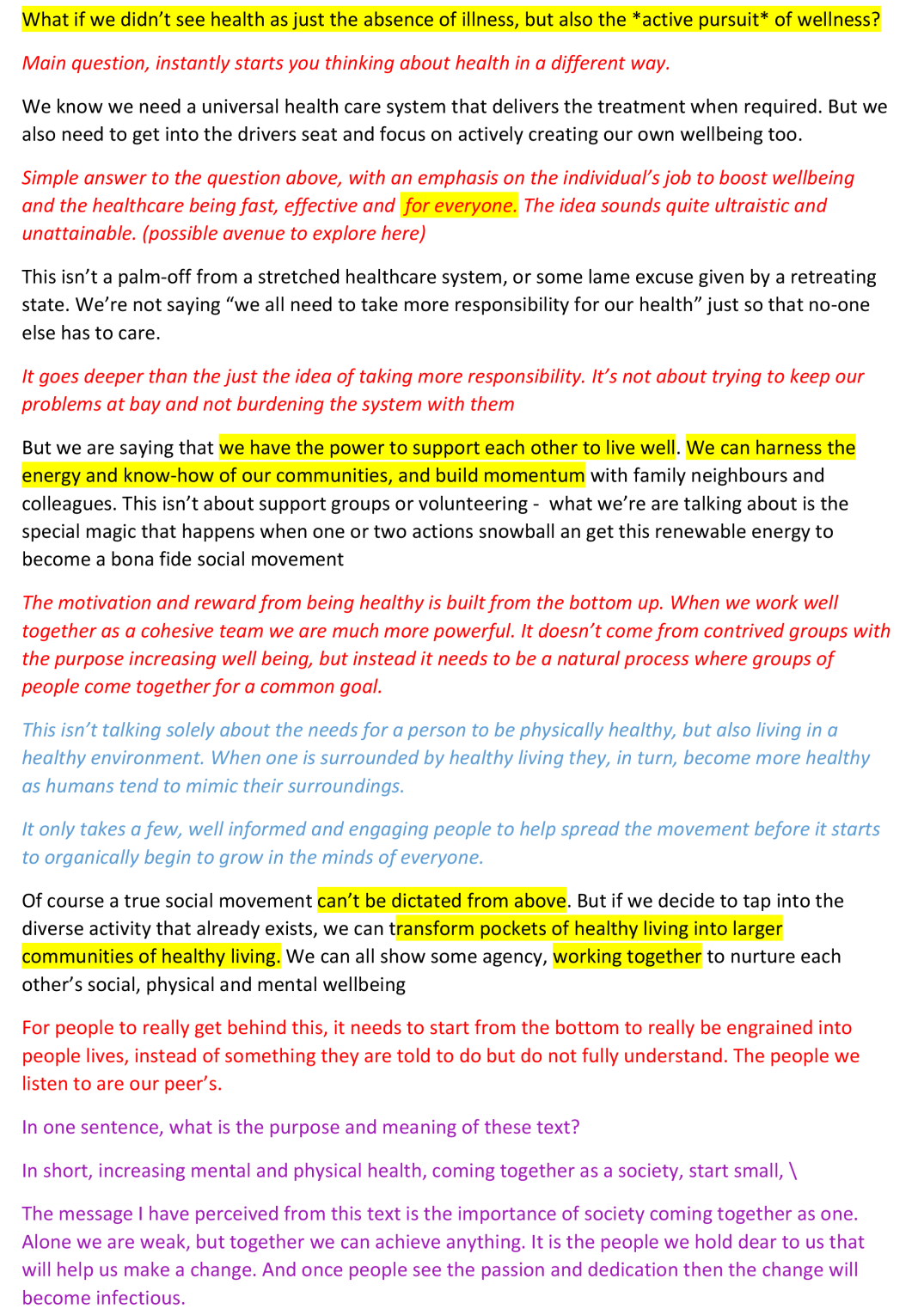RSA Submission
This was my section of the submission
Evaluation
intro write about our ideas
This unit has probably been the unit with the highest workload so far, but that is probably my own fault, taking on too much work even when advised against it at the beginning of the term. But how will I improve without increasing my work load. Overall it has been a good unit, I’ve enjoyed finally getting to learn some real animation skills and I have seen my animating skills improve over the duration of the unit.
We wanted to take this unit as an opportunity to re enter the RSA after we sadly didn’t win last year. We had a point to prove and hopefully with a year to improve our skills we have produced something that has a possibility of winning. We tried to take on board what the mentioned last year about the work being too confusing, so this time we tried to produce something that had a clear story and purpose. I think we achieved that by creating a very visually appealing piece with a short story that an audience could follow. We wanted to make something a bit different compared to other videos that all follow the similar motion graphics / info graphic style. We wanted to make something that really stood out, which is what I think drew them to our piece last year.
The RSA entry was heavily influenced by Pixar, with all our characters taking reference from previous Pixar characters and the whole piece has a very Toy Story esq. to it. We did this because we know how iconic Pixars look is and know it is an effective way to create emotional stories that audiences can empathise with. Empathy was a big part of this topic and creating animations that audiences can empathise with is key to making an impactful video. I think I have achieved this, especially with the grandfather/grandchild relationship of Walter and Cody.
I decided to do this project as a group because the work load would have been far too much for just one person. I worked well with Dorota last year on this project and it was both of our intentions to enter again this year. We asked Emma to work with us as we thought we would be able to get more done when there were three of us. Sadly towards the end of the project Emma was having some personal issues which meant she was unable to complete a lot of the work she had been set. This set our work back a lot because it meant mine and Dorota’s work load increased and sadly it caused us to, in my opinion, not produce a product that was up to my standards. This increased workload to a toll on the other jump and modelling projects. I was unable to fully complete either of them, firstly, because the RSA hand in was earlier meaning I had to leave the other projects until after the hand in and secondly because of the issues with Emma I was extremely stressed from working and not sleeping for a week, I had lost a lot of my motivation.
Another problem we had was, because we were using Vray, the other two were not familiar on how to use it, this meant a lot of my time I shouldve been working on the animation, was spent trying to set up the scenes for the other two to render. towards the end Dorota got the hang of using vray was able to render without my input. However because of their unfamiliarity with the program some of our shots came out looking slightly different. This was also the issue I had when Tomas rendered a couple of the scenes for us. I tried to match the colours in nuke as much as possible but it is still noticeable in my opinion.
On a good note I was extremely pleased at how my renders came out. Lighting and rendering is becoming another area that I am really interested in, aside from dynamics, I really enjoy the outcomes I am producing and see my self improving all the time. I think the depth of field really sells the toy like nature of the piece, close up to the toys has a large depth of field and when its far out in the room it has a low depth of field. I also feel my animation skills have greatly improved over the course of the unit.
I am disappointed in myself for not completing the jump or having the time to create the IK/FK switch on my arm rig. I know i am capable of completing both to a high standard but the work load for for was just too much. I now know for the future not to take on too much and really focus refining something fully before trying to take on anything else.
In conclusion it has been rather up and down this project, there has been some things I have been really pleased about and others that have really dampened my mood for the whole unit. I still intend to pursue improving my animation skills and intend to finish all the projects to a higher standard over the Easter break as i think all of them would be fantastic additions to my show reel.

























